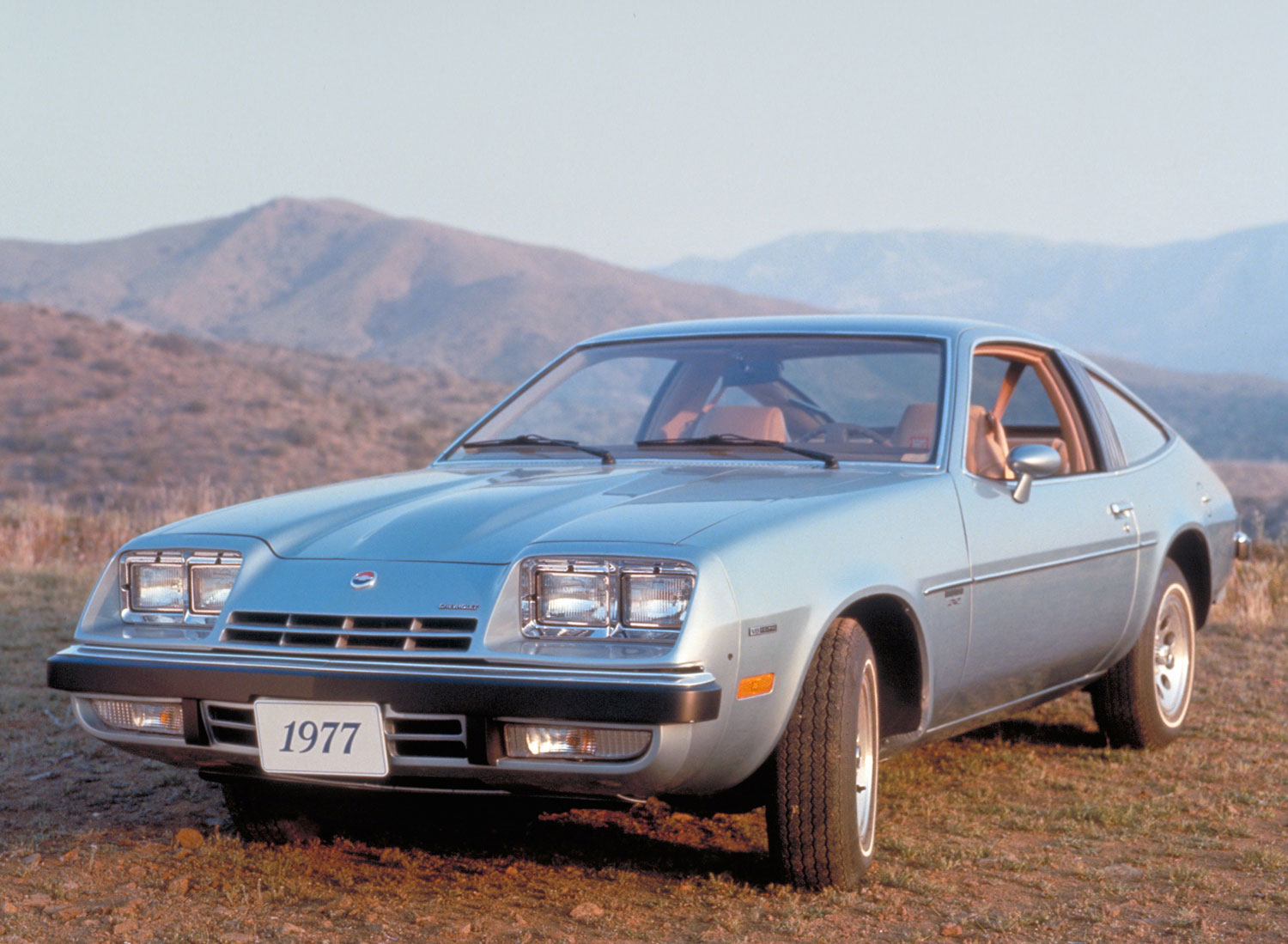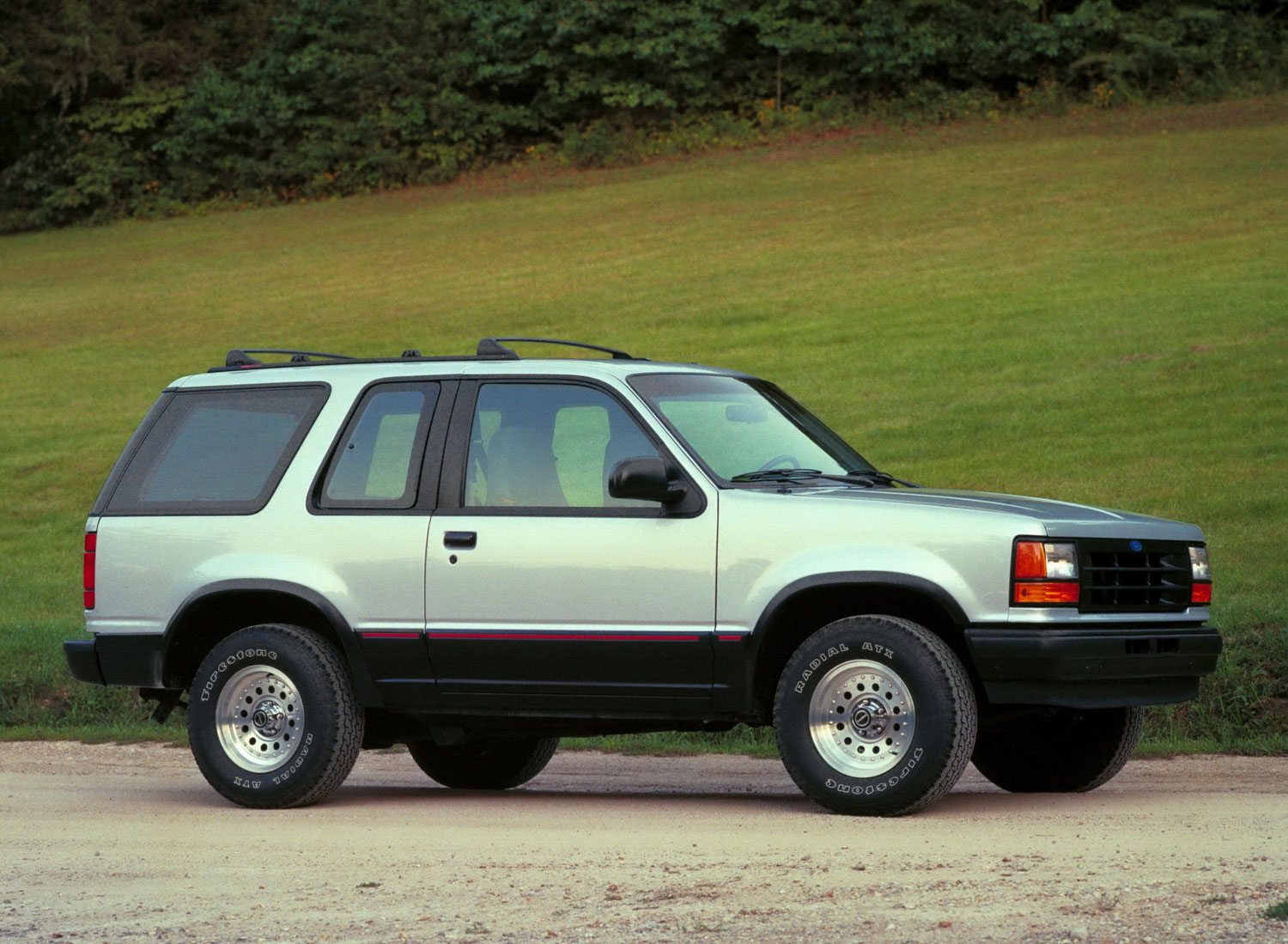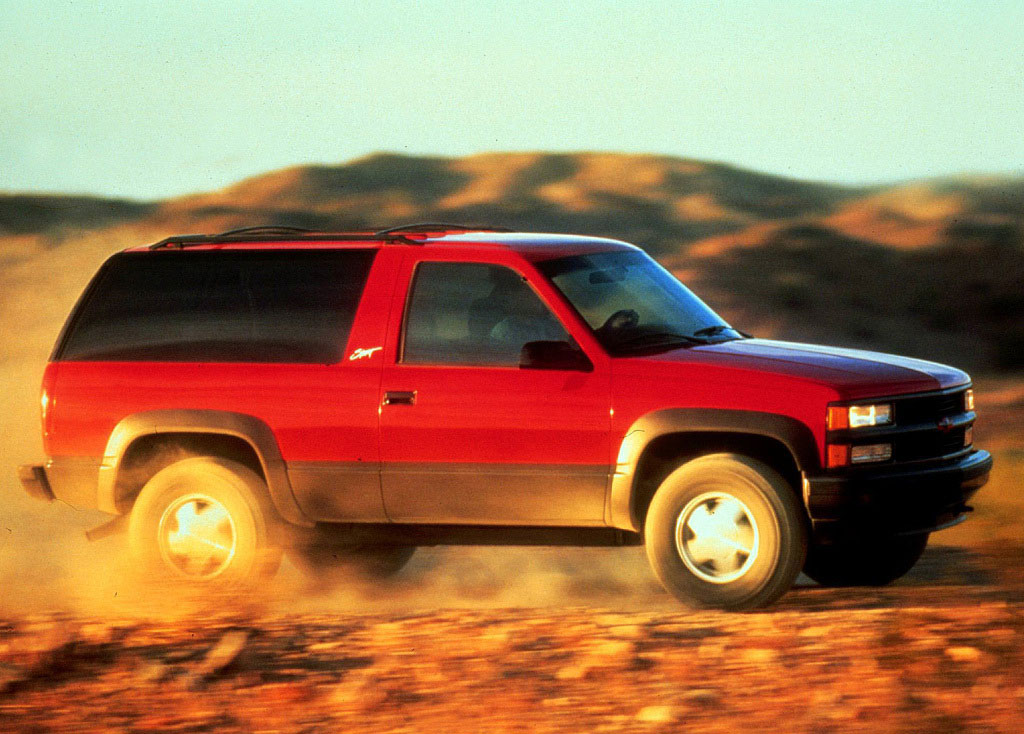Media | Articles
11 car and truck models born as trim levels
Naming a car can be difficult. Often manufacturers that market their cars in different countries— in different languages—choose to go with something alphanumeric. Some argue that strengthens their core brand name, others say it’s lazy and uninspired—that’s me, I’m “others.” Some car names come from lengthy creative brainstorm sessions, surveys, or focus group clinics, while others are just blatantly recycled, even when they make no sense at all. Another option is to promote the name of a trim level to that of a full-blown model, as is the case in the following 11 examples.
Chevrolet Silverado/GMC Sierra


We’re grouping these together because we all know they’re the same truck behind the badge. Back before GM thought its full-size pickups were worthy of a name, they were just labeled 1500, 2500, or 3500 to designate their place on the payload hierarchy. The Sierra emerged as a model name first, in 1988, with the Silverado following one generation later, in 1999.
Chevrolet Monza

First seen on the Chevrolet Corvair, Monza was an upscale trim level before it was used for the H-body compact that followed after the Vega. The Monza was supposed to revolutionize Chevrolet compacts with a Wankel engine, but Chevrolet realized they were inefficient and unreliable and put in a few V-8s instead. It was, in effect, a preemptive rotary swap and a glimpse into the future of thousands of RX-7s and RX-8s that are now LS-powered.
Marketplace
Buy and sell classics with confidence
Ford Ranger

As far as trucks go, the Ranger was a trim level first. The recently reborn mid-size pickup and former compact pickup can trace its name to a mid-level trim of the Bronco and F-Series pickup. OK, it was also the base model in the Edsel lineup, but I think we can all agree to let the Edsel brand all but fade from our memory. Wait, scratch that—the 1960 Edsels were really cool, especially the Villager wagons.
Ford Explorer

Like Ranger, Explorer was used on F-Series pickups before it became the mid-size SUV that was in every neighborhood in the ’90s.
Nissan GT-R

When the Nissan GT-R finally made it to America’s shores, it was as a standalone super coupe, without any ties to the Skyline models sold in Japan. We got the Japanese-market Skyline coupes and sedans in the form of the Infiniti G-series and current Q-series.
Chevrolet Trailblazer

The Trailblazer replaced the mid-size four-door Blazer when it debuted for the 2002 model year on an all-new chassis with power from an all-new 4.2-liter Atlas inline-six engine. Prior to that, we saw the Trailblazer name as a trim of the Blazer in 1999 and as an interior option on S10 models as far back as the 1980s.
Chevrolet Tahoe

In 1995, the full-size Blazer became the Tahoe, a moniker first seen on higher-end S10 pickups and Blazers. Soon after, the mid-size Blazer lost the S10 prefix and the Tahoe added a four-door option.
Porsche Carrera GT

Before it was a mid-engine V-10 halo car for Porsche, Carrera GT was a trim level on the entry-level 924 and the 356 before that.
Subaru WRX

For 2015, the WRX dropped its Impreza prefix, even though it borrowed heavily on the Impreza and shared quite a bit of its sheet metal.
Pontiac GTO

An option package on the 1964 and 1965 LeMans, the GTO was made its own model for 1966. We admit that this one boils down to semantics, as it still shared a chassis and a majority of its body stampings with the LeMans, but GM gave the GTO its own model code in the VIN. Of course, by the time the 2004 GTO was launched, the LeMans and Tempest were long gone.
Chevrolet SS

Super Sport was first used on a 1957 Corvette, but the badge has been worn by everything from Cobalt to Silverado, with the most well-known SS models likely coming from muscle car era Chevelles and Camaros. While it was purely an aesthetic option package for years, it has come to represent the highest performance available for plenty of Chevrolet models. When the last of the rear-drive Holden Commodores made their way to U.S. shores, they were simply called SS, creating a bit of confusion. It didn’t matter much, as buyers got a fantastic chassis and V-8 power with a manual option to make it one heck of a fun sleeper.


The link to discuss the introduction of the Bel Air trim level was supposed to be in this article. Where was it?
Don’t forget the Chevy Nova. The top trim level of the Chevy II
What about the Plymouth Roadrunner/GTX which was a Plymouth Satellite. Or the Plymouth Valiant which produced the Barracuda/CUDA
A more appropriate GTO picture would be the ‘64
The pic is a ’66 because that was the first year the GTO was a model and not a trim level.
its not a 66 i have had a few this is a 67
It’s absolutely a 1966.
You are mistaken. The picture shown is a ’66 GTO.
Not sure how you could have had a few of these and not know this is a ’66.
It’s a 1967 because I owned one from 1967 to 1971. Compared to the same body from 1966 the v shaped GTO emblems were placed midway up on the front fenders on the 67. The running board area chrome trim was also bigger on the 67. The 1966 didn’t have the side marking and had a thin running board area chrome strip. The 67 also had the 400 cu. in. engine with a Rochester Quadrajet whereas the 1966 came with a 389.
You are mistaken. The picture shown is a ’66 GTO.
I’m no expert but the 67 has that upper chrome piece that drops down from the top of the grill in the center and connects to the bumper. It’s not present in this photo therefore a ’66.
The rocker panel trim on a 67 was wider and actually higher then the bottom of the door.
66 Goat had black grills with square openings 67 had chrome grills made of heavy wire mesh square openings on a 45 degree angle the goat pictured is a 66
I owned a 67 and agree that the black grill shown to be a 66.
Study your lesson guys. 1967 GTO with a 1966 grille frame and black grille. Nobody wrong here………
I was wrong, 1966 GTO pure and simple. At 70 years of age got confused comparing the two. Black grille and grille frame is on 66 versus different chrome/silver mesh grille on 67, lower rocker panel is simple and straight as opposed to 67’s wider in sections, GTO emblem on 66 is on the fender and the 67 is on the rocker panel. Tried to find a pic of the car on the net to see if we could get a rear pic, but to no avail. I have seen redone GTO’s with the incorrect grille assemblies installed……….parts are hard to find…….they are not Camaros or Mustangs
Buick Riviera
The Buick Riviera should have been counted in this as well. Originally the “Century Regal” eventually became its own model the Buick Regal in 1977. Interestingly, 20 years after they dropped the Century name it came back in 1997, and the Regal once again was basically an up-level Century.
I have a 1976 Buick Regal S/R Coupe and it does not have any Century badges on it. First year of quad square headlights and the body looks much different than the 1975. Any idea of what the S/R stands for?
Riviera started as a trim level in 1949 for postless four door hard top Buicks and became its own model in 1963
The Riviera was the model name for the postless 2dr. hardtop in 1949. The 4 dr. postless riviera was introduced in 1955.
I agree with David. Why didn’t the Bel Air / Impala make this list ?
Well Bob has said he didn’t like them cars
Bob must be an idiot. In 1967 chevy offered an Impala SS. Options were up to a 427 tri power, 4 speed, bucket seats with console, and you could order a positrac unit all the way up to 7.14 ratio. Not sure why. My dad sold cars then and I looked at one of the order forms. I had one but it was too rough for me to restore. Those were the most beautiful cars made.
Agreed Marc my parents bought a new 67 Impala SS 327 model white with black top and interior. Loved that car used to wash and wax it for my Mom. I was a bit upset when I heard they traded it in for a Celica GT. I got a 69 GTO though.
Oldsmobile 442
Olds Cutlass would be another. I had a ’64 F85 two door hardtop with the Cutlass package. F85 badge on the grill and Cutlass badges on the fenders. I also had a ’65 F85 base two door sedan. Both in my youth.
So when did the Cutlass and 442 become stand-alone models, 1968?
Adding to the list, wasn’t the Supra a trim level of the Celica too?
No….the Supra was a 6 cylinder and required its own lengthened chassis.
No, the supra was always more than a trim level. It debued as the six cyl super Celica in 1968 (69 for north America) with 5 1/2 inch longer wheelbase and totally different drive train. It did share the doors and rear body for 2 or 3 generations. Celica trim levels were ST, LT, and GT.. Supra LE and GT
That said, they DID share the “A” designation in the VIN – RA (and TA outside of North America) for the 4 cyl, and MA for the Supra – R for the 8R, 18R, 22R and 22RE engines and TE for the 2T (1600) and 3T (1800) and 2TG and 3TG (twin cam) and M for the 2M to 5M and 5MGE Twin cam inline 6 (and 5MGET turbo BEAST)
Mercury Capri not made the same switch but also when tremendously different body styles, shapes, and sizes, in its many iterations.
Yes and no, I think the first use of the Capri name was the Ford Consul Capri which was a coupe version of the English Ford Consul, then became the UK and German Ford Capri and US Mercury Capri. This makes the first Capri a model rather than trim.
For the record the European Capri ran through 3 generations until 1986, the US model became a Fox body Mustang variant from 79-86 and then reappeared in the early 90s as an an Australian built convertible based on the Mazda 323 platform used for the Australian Ford Laser and US Escort.
Lincolns in the early ’50s were badged as Capris
Capri started out as a Lincoln model, WAY back from 1952 to 1959 and then Ford of England the name was used on a Consul from ’66 to ’67. In ’66 and ’67 the Capri name was used on a North American Comet –
Interestingly in North America the Capri was always sold by the Lincoln Mercury division of FMC
Also the 1967 Plymouth Belvedere GTX.
Ford also used the Ranger on first generation Bronco . It was the top of the line trim level with chrome trim, carpet, houndstooths insert seats, swing away tire carrier… Sport was the mid level Bronco
Pontiac initially made the Trans Am an option on the Firebird, but eventually offered the Trans Am as a stand alone offering.
Also Ford Galaxie, started as Fairlane 500 Galaxie in 1959, became the Galaxie in 1960
Man, tough crowd.
The title of this article specifies trim levels. I’m not as familiar with some of the imports featured but I’m very familiar with most of the GMs listed. As the article progressed, the trim level (admittedly an option) morphed to options that were not primarily trim levels…most specifically the GTO. A 389/400 was not offered in any Tempest/LeMans non-GTO.
In 1966 you could buy a 389 tri-power Tempest that was not a GTO – and in 1970 there was a COPA 400 cubic inch Tempest Magnum – Knaffel Pontiac – and in Mid ’70 the Tempest T37 was available on standard order with the 330HP 400 cu inch 4 barrel engine
You could never get a Tempest with the 389, and never a Tempest with tripower